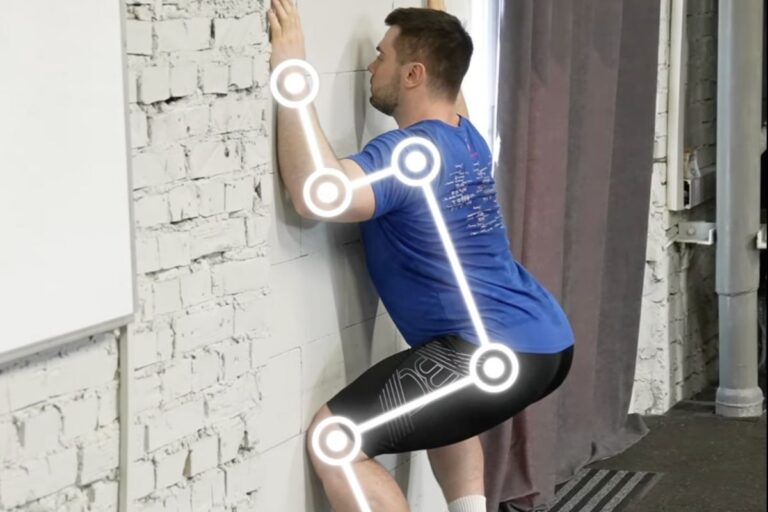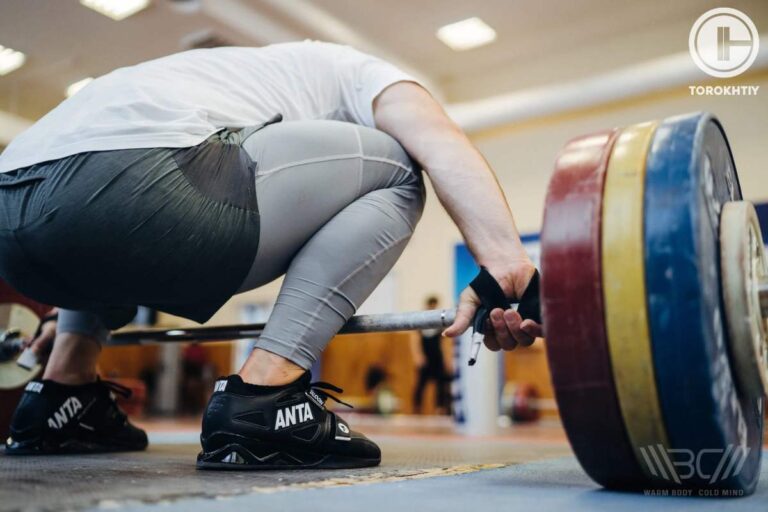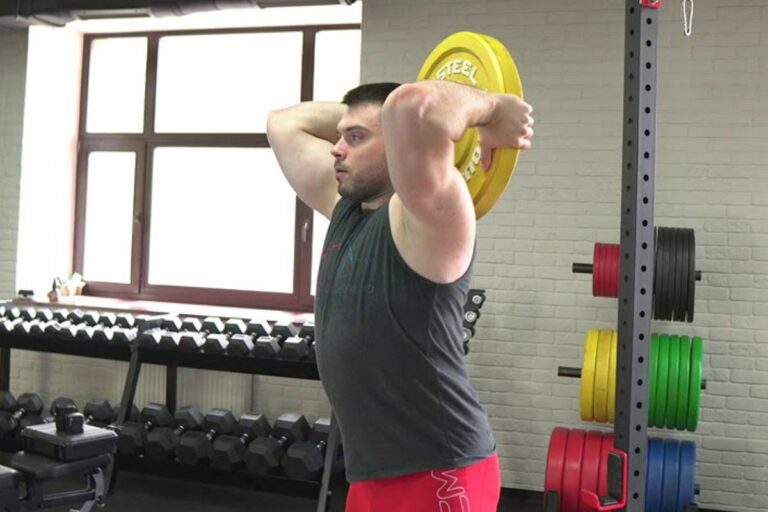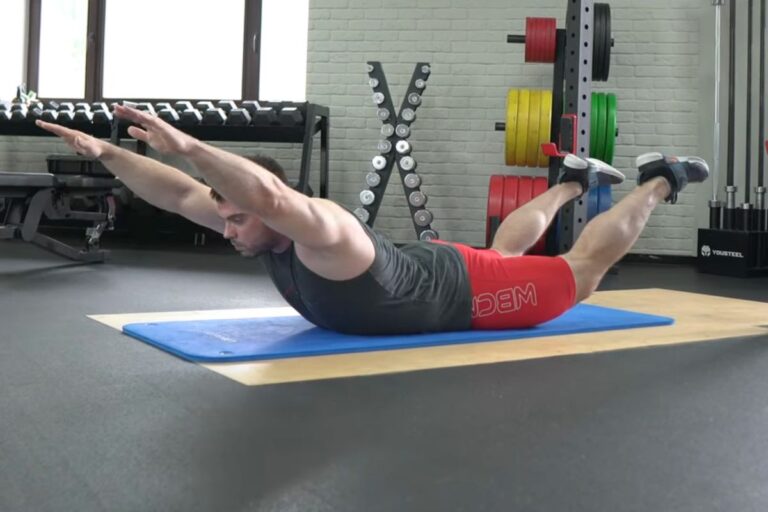Muscle Snatch
One of the least utilized and frequently done wrong drills in weightlifting may be the muscle snatch. Due to its frequently poor execution, which prevents it from serving the intended objective, it may not be used as frequently as it might.
The muscle snatch is exactly what it sounds like. An exercise that emphasizes aspects including finishing the pull, raising the elbows, quick turnover, and maintaining contact with the bar.
The idea is to avoid making any sudden movements beneath the bar while keeping the feet level on the ground.
The muscle snatch is a variation of the power snatch. Coaches use it to work on the snatch movement, step up its first phase, and improve the mechanics and smoothness of the pull and turnover.
Muscle snatch is one of the most popular strength exercises not only in weightlifting but in a regular strength workout too. It has a lot of variations: different grips and starting positions. You may even come across its adaptations with a plate, kettlebell, different balls, and fitness bags instead of a barbell. In functional fitness, athletes sometimes use unstable surfaces such as BOSU, fitballs, etc.
Still, coaches and athletes often fail to appreciate and use barbell muscle snatch properly. The reason is a bad understanding of the exercise’s value and help. In this case, it entails the wrong technique and you won’t get its obvious benefits.
In this article, we will discuss what is muscle snatch as a basic exercise that can be used by Olympic weightlifters, crossfiters, and athletes from other kinds of sport.
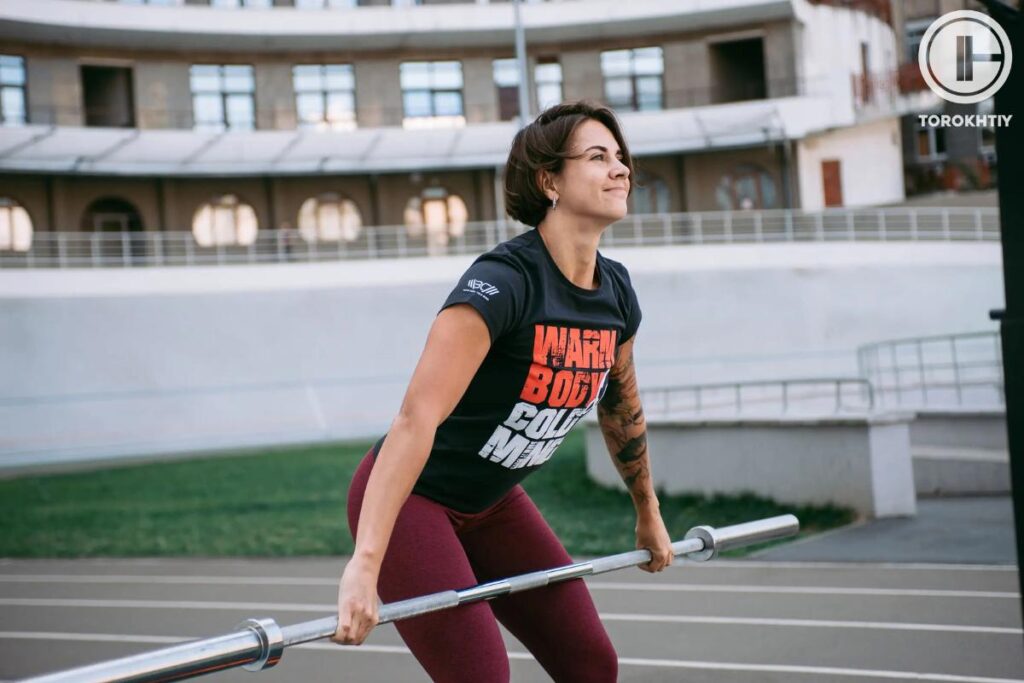
The technique
Set up the snatch starting position. Drive a barbell off a platform and move till you reach the full knee and hip extension. At this stage, instead of the second pull and turnover, drive your elbows vertically and continue pulling the bar while keeping it as close to the body as possible. Remember to direct the elbows strictly upwards and outside.
After reaching the maximum height, rotate the forearms and keep going up to the final overhead position slightly behind the neck. The last phase should be precise, firm, and aggressive. Maintain the torso, knee, and hip joints straight.
This is the main difference between muscle snatch vs power snatch: no second pull or squat in the turnover. In order to reach effective dynamics, keep the bar in control throughout the whole range of motion with no pauses or slowing down.
You can only benefit from this exercise if you don’t make a very common mistake – pointing elbows down in the final phase. If it happens, it becomes something like the muscle clean + neither overhead nor chest press with a wide grip. Sometimes, as a joke, I call this technique muscle snatch crossfit.
While learning this movement, it is worth imagining it as a set of the high-pull without the second pull but with powerful arm work in the end. It helps create the right stereotyped movement emphasizing “high elbows”.
It is important to combine both light and heavy weights for muscle snatches. In the first case, it improves the mechanics of the upper body, and in the second case, it boosts the power in the same snatch phases.
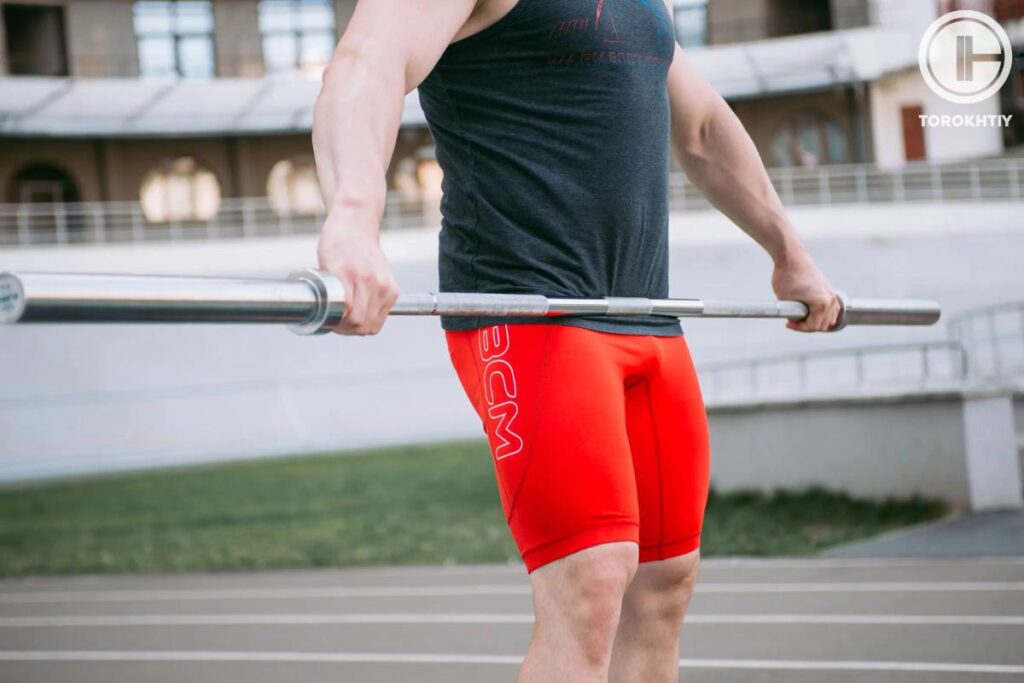
The muscle snatch can be used at the very beginning of snatch workout both as a technical (with light weights) and a strength exercise. It depends on the training period and an athlete’s level. You may even notice that someone uses the muscle snatch before the clean & jerk in order to slightly tense “the snatch muscles and angles”.
It helps accustom their body to performing the clean & jerk with some signs of tiredness just the way it is always done after the snatch at competitions. Traditionally, the number of reps is varied from 1 to 6. Most often, athletes use 3-6 reps for moderate and technical work and 1-2 reps for heavy weights or controlling sets.
There are plenty of variations of position muscle snatch: from a plate, blocks, or a hang position. If your goal is to focus on speed, mechanics, and technique, you can use straps. However, if you aim to strengthen muscles, it is better to work without straps, and during the transition period, you may even replace the hook grip with a regular one.
Unfortunately, while performing heavy muscle snatches, many athletes (especially crossfiters) lower their elbows sharply before raising them high enough. Therefore, a body leans backwards, and the movement diverges from the snatch completely. This crossfit muscle snatch may look impressive, it is likely to fall short of its main point – improving the snatch.
A logical question arises: how can you solve this problem? The answer is simple: while doing muscle snatches always direct your elbows straight up as long as possible. Also, a useful hack is to point the elbows upwards even while lowering a bar.
Another simple and helpful exercise for dealing with “upside-down elbows” is the tall muscle snatch with a PVC or an empty bar.
Stand upright, grab a barbell with a hook grip, and work only with your arms: pull the elbows upwards and outside, then, rotate the forearms up and back directing the bar slightly behind the head. It will simplify the movement and help control the barbell the whole way up since it won’t have the flight phase.
In case you make this mistake, be ready to devote a lot of time to overcome it and even reduce working loads for a while. But don’t let it bother you because you will definitely get more benefits from the right move even with lighter weights and see a significant difference in your snatch soon.
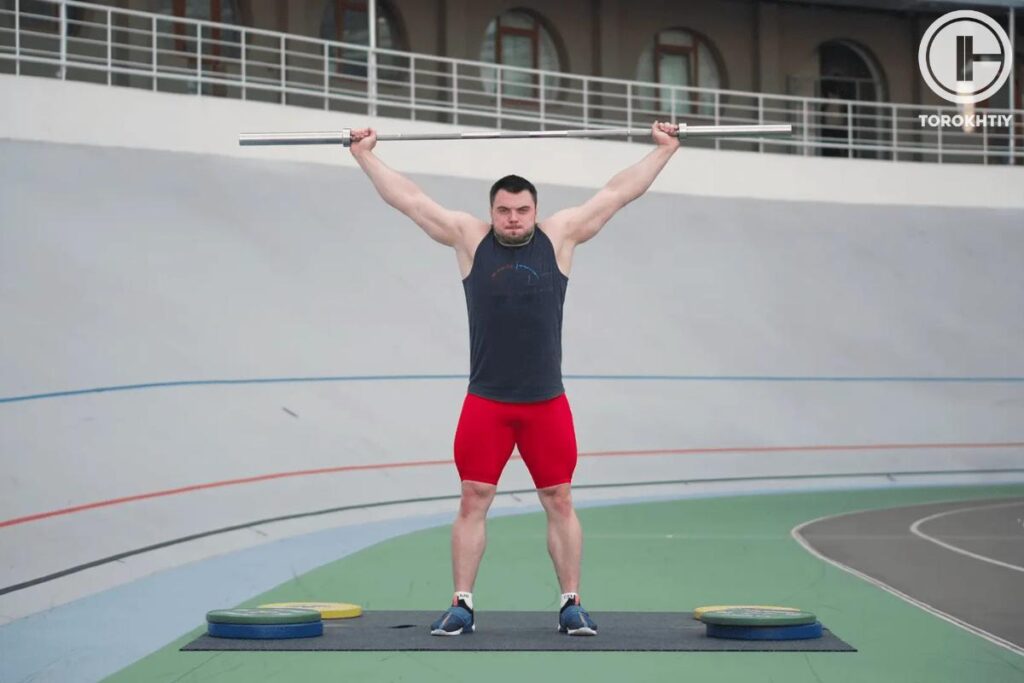
The main benefits for the snatch workout:
1. The targeted and high-quality preparation for the snatch:
The muscle snatch is a special warm-up for all upper limb muscles before the heavy snatch. The muscle snatch with comparably light weights during the warm-up perfectly “switches on” the lower and upper back, triceps, biceps, shoulders, etc.
2. Improves the power and technique in the turnover.
Many athletes lack the upper body strength and/or coordination to pull a bar high enough and instantly get under it. The mechanics of the muscle snatch helps solve the problem of power and timing.
3. Betters the trajectory and the sequence of the muscle involvement in the pull and snatches exercise.
If the muscle snatch is performed correctly, an athlete locks out the knee and hip joints completely. It keeps them from moving the center of gravity either back or forward. Also, an athlete can’t jump to fix the weight. Therefore, you improve the balance and the pull movement which are very important for the snatch.
Another mistake is losing control at the final stage. “A technical disease” of many athletes is sending the bar away from them after a powerful second pull instead of keeping it as close to the body as possible. The properly performed muscle snatch will help “heal” it.
4. Optimal variation in case of injuries or limitations.
In case of slight injuries, a doctor or rehabilitation specialist may recommend avoiding dynamic and aggressive snatch exercises for a while. However, performing the muscle snatch within a comfortable load will keep all muscles toned and even improve coordination and particular elements’ preciseness. The muscle snatch is also a great tool to warm up and cease sore muscles after a heavy workout.
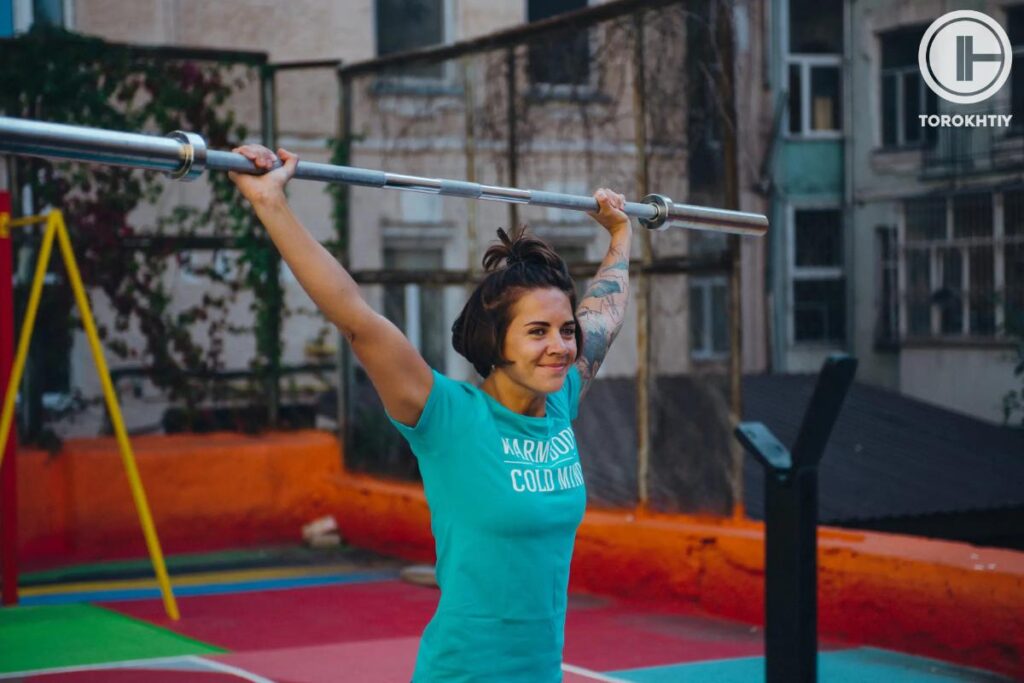
How to program this drill?
The muscle snatch exercise can be done as a technical warm-up activity in the beginning of a lifting workout. It can also be done as auxiliary work at the conclusion of a training session. It may also be used for heavy doubles or singles, normally use 3-5 repetitions for 3-5 sets.
Why is your time worth it, then?
Why should you put the muscle snatch drill when your training plan is already crammed with the newest, trendiest movements?
It’s the ideal hybrid movement of force and strength. You’ll need to swiftly move the bar from the starting position to above in a single motion, which calls for the development of type II muscle fibers. Only really strong athletes can push through the pressure at the top when the velocity of the bar dies, though.
It’s a great movement for beginners. The snatch may be really frustrating if you aren’t an Olympic lifter with a lot of skill. The enormous path of the snatch pull magnifies little errors, and bad lifts in snatch can occur often.
It corrects technique. The majority of people who do the squat or power snatch frequently have a serious defect in the form of an incomplete hip joint extension at the final stage of the second pull. Muscle snatch definitely will help to fix this issue.
So If you desire to try different things with Olympic lifts, you may incorporate this drill to your program. Alternatively, you can perform it merely as a way to incorporate some lifting into your training. Additionally, it may be employed as a technique improvement when the standard snatch isn’t working out.
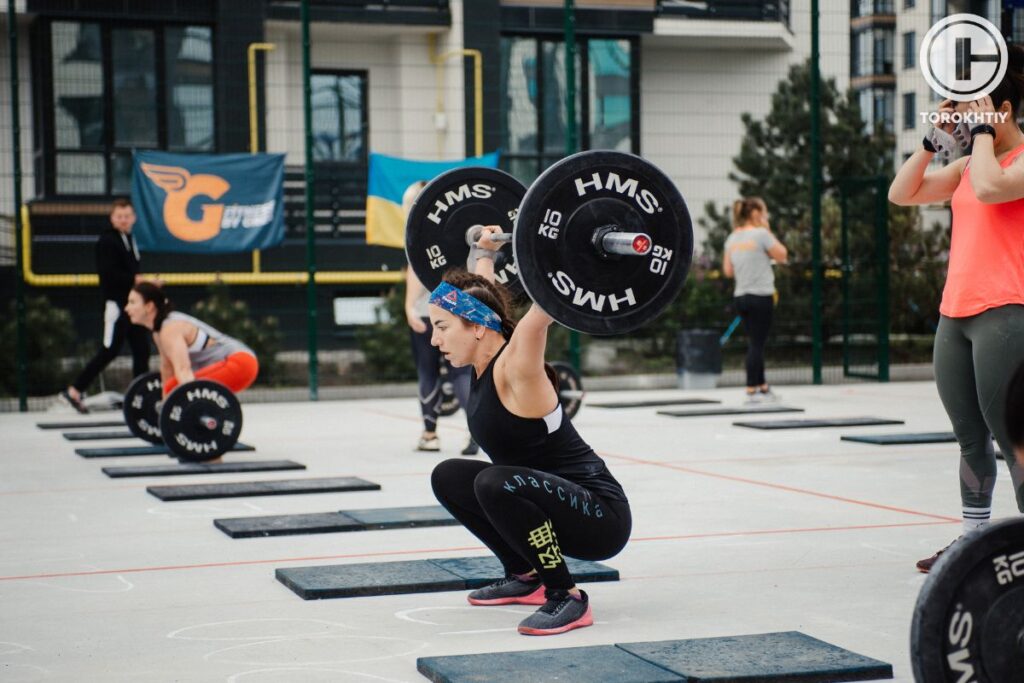
Let’s make a conclusion: the muscle snatch is a helpful assistance exercise for athletes who lack aggressiveness, power, and technique for snatching heavy weights.
Author: Oleksiy Torokhtiy
Olympic Weightlifting Champion
Best Results: Snatch – 200 kg,
C&J – 240 kg
Oleksiy Torokhtiy is a professional athlete boasting 20 years of experience in Olympic weightlifting. With multiple European and World titles under his belt, he has showcased his prowess in two Olympic Games (Beijing 2008 and London 2012). Upon concluding his illustrious career, Oleksiy dedicated himself to coaching. By 2022, he had conducted over 200 weightlifting seminars worldwide. He is the visionary behind an international sportswear and accessories brand known for its motto, “Warm Body Cold Mind.” Additionally, he is an esteemed author and the creator of a series of training programs and eBooks.


